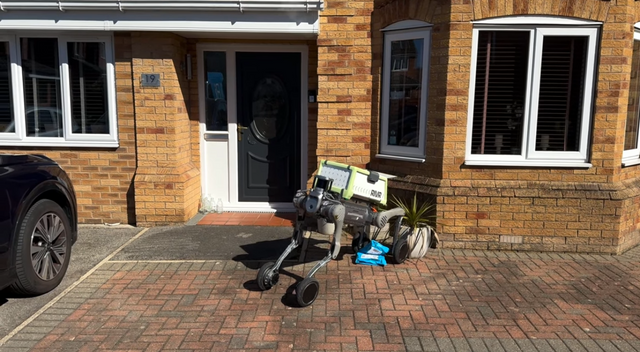Wheeled robots are now delivering packages to your door.
Wheeled robots are now delivering packages to your door.

The following scenario is already happening
Designed for dense urban environments and multipoint logistics scenarios
Follow my publications with the latest in artificial intelligence, robotics and technology.
If you like to read about science, health and how to improve your life with science, I invite you to go to the previous publications.
You want to win, play HARRY-RAID
If you like to read about science, health and how to improve your life with science, I invite you to go to the previous publications.
You want to win, play HARRY-RAID